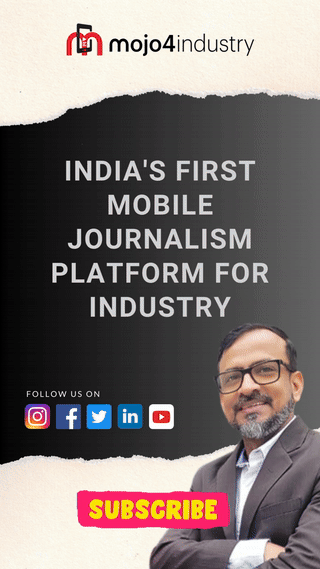Cities have to become more human-centric: Robert Demann, Siemens
Smart infrastructure from Siemens intelligently connects energy systems, buildings and industries to adapt and evolve the way we live and work. In an exclusive interview with Subhajit Roy, Robert Demann, Head, Smart Infrastructure, Siemens Limited explains how digital technologies are transforming Indian cities and what will drive the growth for Siemens Infrastructure in future.
Robert, we are talking about the Smart Infrastructure for the past few years and now the concept of ‘Infra 4.0’ is catching up. Could you briefly tell us about this new concept?
Infra 4.0 is about combining smart and sustainable infrastructure. This is done by creating and optimizing a network of infrastructure by connecting smart grids, smart buildings, and smart environment to an integrated, intelligent platform. Unlike regular infrastructure, smart infrastructure is not about the time and the material needed to build and run; it’s about the data needed to plan, manage and run it efficiently. And the idea is that by using the power of the virtual world, we can optimize the use of resources in the real world. I think that’s one of the key aspects what Infra 4.0 actually facilitates.
Today Industry 4.0 is talk of the town. What role does Infra 4.0 plays in the age of Industry 4.0?
Basically, Industry 4.0, the revolution heralds, actually the growth of data-driven AI powered networks, smart factories, and for these factories to actually leverage the full capability – they have to be somehow embedded in a smart environment. And Infra 4.0 actually enables these smart factories.
You are now in India for quite some time now and if you have to share the experience of India, how digital technologies are transforming Indian cities?
If we look at Indian cities, I think one topic we will all agree with is that they have to become more human-centric. That means it is all about also improving the quality of life for the citizens in Indian cities. And if we talk about what is necessary, I think everyone will agree that safety is an important aspect. Clean and reliable electrification is an important aspect. Clean Air is an important aspect. And I think everyone has faced the challenges of moving around cities. So, I think also being able to move around cities effectively is an important aspect. So, for a common city dweller, these (digital) technologies help improve his or her life.
And one such example of the technology Siemens has deployed its technology with the northern regional load dispatch centre where as a result the chances of blackouts have been reduced. And the reliable power supply contributes to economic activity. So that’s the starting point. Then next point, which comes into, let’s say, smart technology in a city could be something like a smart meter. In a number of cities like in Mumbai and Delhi, you’ll see the use of smart meters. And Siemens has worked also with a number of utilities to provide these solutions. And the advantage of this is, for example, the utility has a clear understanding of the electricity being consumed without even sending someone for physical meter reading. As a result, it (the utility) can plan its energy consumption better. And for the citizen, he knows he’s getting accurate bills, he can also use e-payment solutions to pay for them. And he got also a feeling of where his electricity is being consumed.
In a number of cities including in Delhi smog towers are being installed to help combat air pollution. And I’m happy to say that in some of the smog towers, Siemens Electrification portfolio is used to power the smoke towers. Also, intelligent traffic management systems are being deployed in cities like Bangalore to optimize traffic and reduce the waiting time at signals. So, these are few examples to show how the technologies already being deployed today in Indian cities to make lives more convenient.
And of course, a lot more can happen. Once it’s more widespread, people should be able to experience this on a regular basis.
When it comes to India, Bangalore remains an example for digitalisation of cities. How can we replicate this model across the country?
Yeah. So, when it comes to replication, if we look at cities, specifically, it always becomes a big challenging topic, because there are many decision makers involved in it. And I personally believe that the best way of actually making cities smart is to focus on smart campuses. My belief is, the most efficient way to get city smart now, is by making sure that there are many, many smart campuses which make first of all working living, convenient, and let’s see the efficient use of tools infrastructures as well as make sure that energy consumed is being done in an efficient manner. Our Siemens India in Kalwa (near Mumbai) is one such showcase. We have deployed a number of technologies to actually make the campus smart so that it helps also achieve our overall goal to become carbon neutral by 2030.
In India, what will drive the growth for Siemens Infrastructure in future?
India will be building one new Mumbai in every one to two years for the next 10 to 15 years. I think that shows huge potential for building of new infrastructure and modernization of existing infrastructure. This will contribute a lot to our business. And we see ourselves as a leader in smart electrification. Our portfolio will help drive energy intelligence and ensure that grids are more resilient, flexible, while also supporting sustainability aspects like decarbonisation.
The second aspect will be residential building services. People spend most of their lives in buildings and 40% of the energy consumption is in building. We can help optimize emissions from these buildings as well as make it also more convenient for users to use. Also, we can make sure that these buildings are effectively use. That means there won’t be a lot of space being empty which will lead to more efficient and sustainable building operations.
We will also see that we have innovative electrical products that help to make sure that all these technologies from the grid side to the buildings are resilient and flexible and allow us to ensure high quality, functional and reliable solutions for the customers.







